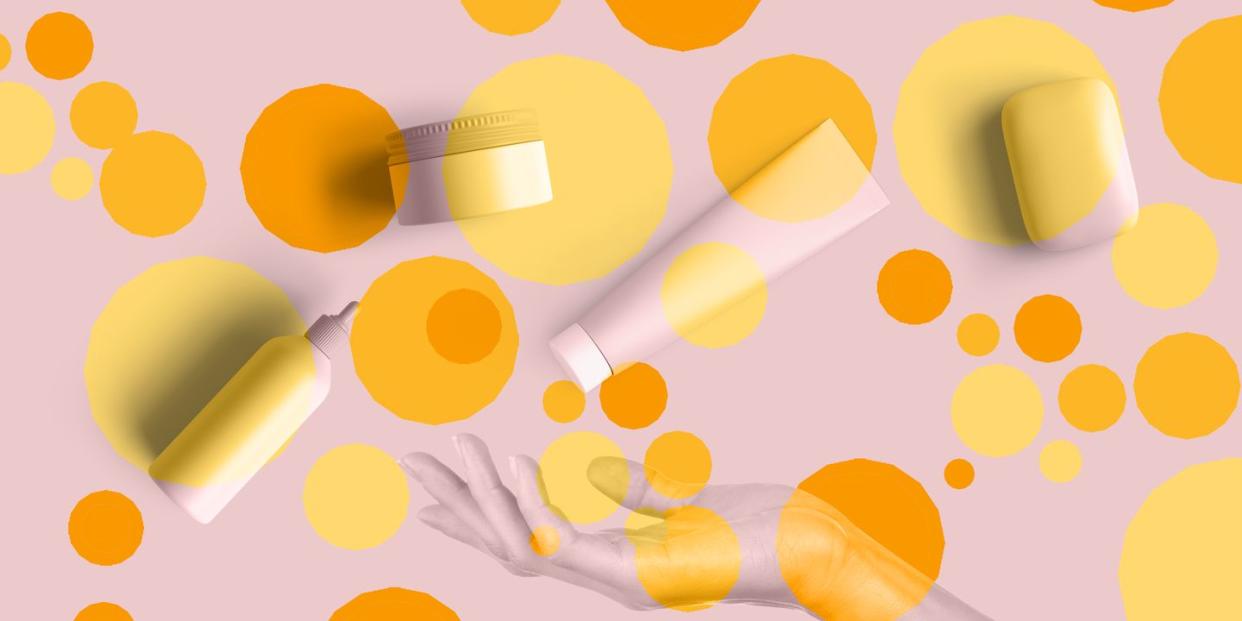Skinimalism: The Stripped-Back Beauty Routine You Should Bring into 2023

"Hearst Magazines and Yahoo may earn commission or revenue on some items through these links."
The booming beauty industry is one big, tempting candy store of skincare these days. It leads to joy for product enthusiasts, but also confusion and a tendency to over-apply. The experts are concerned. “I have a lot patients who play chemist with multiple skincare products,” says Karan Lal, DO, a double board-certified dermatologist in Scottsdale, Arizona. “So many products that when I take their histories, I see that on average people are spending over $600 at a time.” This, he warns, is the drawback to an otherwise golden age of skincare accessibility. The barrage of info and images around hot new ingredients has prompted many of us to amass an arsenal of cleansers, toners, serums, exfoliators, masks, and moisturizers…until lengthy multi-step, mix-and-match beauty routines somehow became normal, woven into our everyday lives. Problem is, there’s an aggression hiding in the method, and it can wreak havoc on our complexion, cash flow, and time. For more on why, plus the simplified routine experts do recommend, read on.
The pitfalls of a more-is-more approach
Piling on products, taking a stab at blending ingredients, swapping formulas in and out too often, and going heavy on actives can cause issues like irritant contact dermatitis, which triggers rashes and damages your skin’s outer protective layer, warns Lal. Trust him when he says you do not want to suffer from this. “You can also aggravate preexisting skin conditions,” he continues. “For instance, people will layer in something with vitamin C not knowing it can make their acne worse. And allergies! It’s a nightmare when people use 10 products and have a reaction. We basically have to cut everything out and start fresh.”
Shereene Idriss, MD, a board-certified dermatologist in New York, is also sounding the alarm on winging it. “You could be double dipping with certain ingredients that can lead to inflammation,” she says. “For example, niacinamide helps regulate oil production, minimize redness, and fade dark spots. However, the sweet spot for niacinamide is at a level of 3 to 5 percent. Having it in too many products in your routine can actually cause your skin to be inflamed, the very thing you were trying to correct in the first place. You also don't need more than one exfoliator. Over-exfoliating can lead to a wrecked skin barrier.”
To save your skin, probably your sanity, and certainly your savings account, the experts endorse going minimal, or “skinimal,” the rising trend that upturns the prevailing plan of attack. It means paring down your skincare routine to hardworking essentials, without sacrificing benefits. This is the plan the pros follow. And their skin says it all.
Why less is best
“There are so many benefits to a simplified skincare routine, starting with being able to stay consistent, which is necessary to seeing results,” Idriss says. She believes the magic is in using just a few effective products that are formulated to target your main skin concern. “If your biggest problem is discoloration, look for brightening ingredients. If it’s redness, look for calming and soothing ingredients. And if it’s dryness, look for hydrating and restorative ingredients. But don’t tackle all those things at once.”
To drive home the message of downsizing, she posts her own beauty routine @shereeneidriss. The rundown: After cleansing with Bioderma or Vanicream in the evenings, she uses the products from her line, PillowtalkDerm, a three-step solution for discoloration. On occasion, she swaps in retinol or a hydroquinone pad in place of exfoliating. Key word: swaps. Not adds. Her mornings are similar, except she doesn’t cleanse and adds SPF.
Whitney Bowe, a board-certified dermatologist in New York, champions the idea of skin cycling, which involves toggling between nights when you use a single active ingredient (say, an exfoliator or retinol) and those when you stick with only moisturizer. She, too, shares her personal skincare habits @drwhitneybowe. Her “exfoliation night” routine includes a gentle cleanser, her own Exfoliation Night Brightening and Resurfacing Serum, and her own Bowe Glowe moisturizer. That’s it.
Derms aren’t the only advocates of dialing down. A number of skincare brands are also onboard, bringing us either a one-and-done hero product, or a few synergetic formulas meant to comprise a full routine (shop many of our favorites, below).
One brand with simplicity at its core is Doré, recently launched by Garance Doré, the French beauty and fashion influencer. “I’ve always found that the more I pare back my routine, the more my skin thrives. Usually, it’s the complexity of too many products and too many harsh actives that has made my sensitive and acne-prone skin worse,” she says.
Vintner’s Daughter founder April Garguilo describes her philosophy as "fewer, better: fewer products that are made with the finest-quality ingredients and methodical formulation techniques,” she says.
Your pared-down plan
Skinimalism doesn’t require tossing your favorite actives. It means choosing wisely to target your most pressing concerns and avoiding overlap and overload. As the name suggests, the plan is minimal: three to four steps that include a cleanser, an active serum (this is where a great multitasker comes in that does the thinking for you by providing the right combo of ingredients in effective doses), a moisturizer or oil, and SPF (or a moisturizer with SPF). Both Lal and Idriss say you can add a booster to address a specific issue, like a retinol for acne or fine lines, hydroquinone for discoloration, or an exfoliator to smooth, but depending on the strength of the formula, this may be a step you add in once or a few times a week. Many brands have done the thinking for you, curating simplified but effective sets or an everything-but-the-kitchen-sink formula:
You Might Also Like
